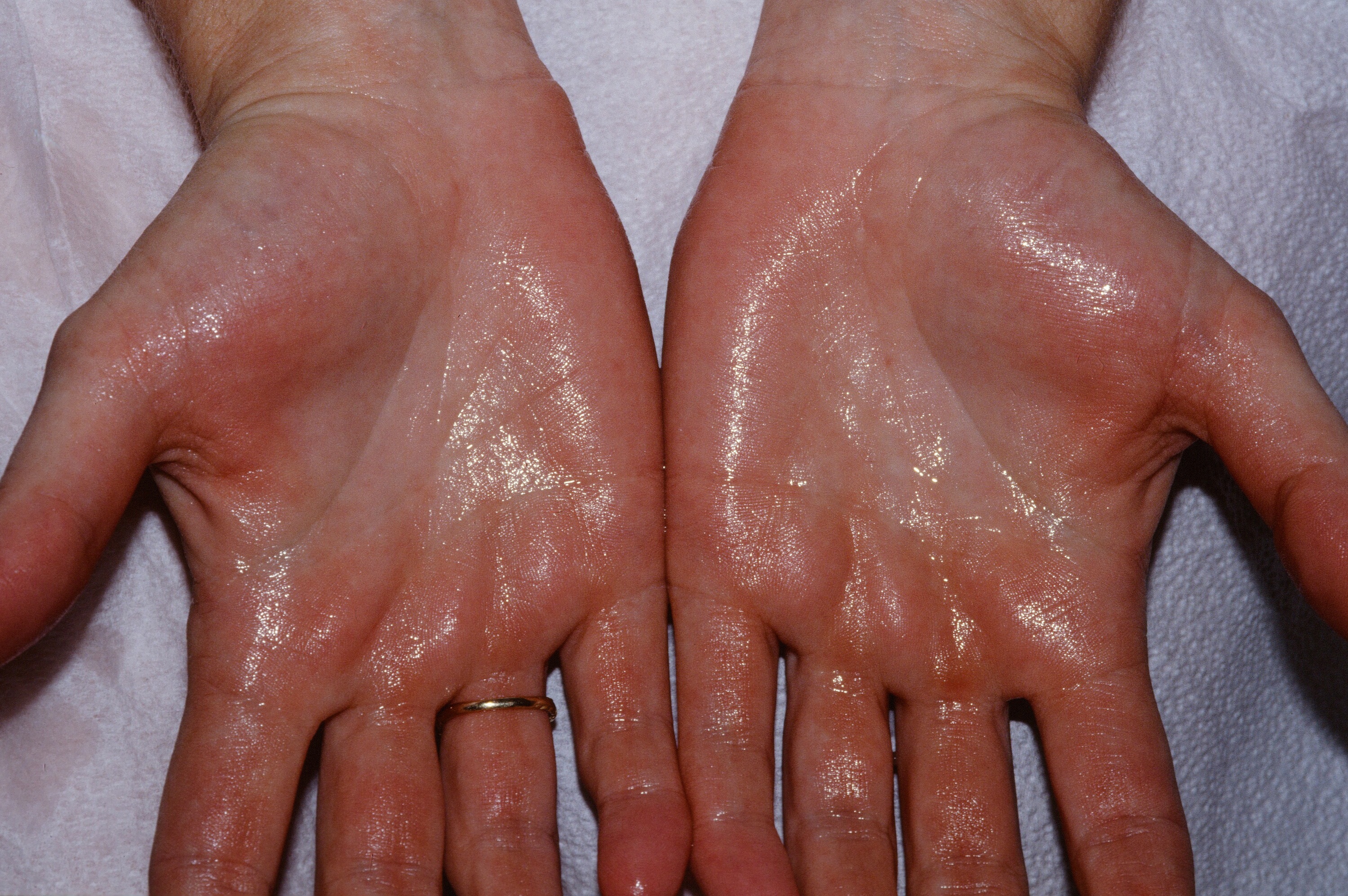 You go to shake the patient's hand and she tries to hardly touch your hand. Or, she has a tissue in her hand and uses it just before shaking.
You go to shake the patient's hand and she tries to hardly touch your hand. Or, she has a tissue in her hand and uses it just before shaking.
HYPERHIDROSIS
Hyperhidrosis is excessive sweating. It is most common on the palms, soles and axilla. Many patients are unaware that hyperhidrosis is a recognized medical condition, much less that there is treatment available.
- There is a positive family history in 30%-65% of patients.
- It affects 3% of the general population.
- It may cause great social embarrassment, but may also impair work or daily activities.
- Anxiety and depression are associated with severe hyperhidrosis.
- Think of it when the patient wipes their hand on a tissue or their clothes before shaking your hand.
- Common to get buttock folliculitis. Think about hyperhidrosis when consulted for a buttock folliculitis in a child.
- If widespread, consider specific causes, e.g., hyperthyroidism.
- For focal sweating, especially with onset in adults, consider neuropathic or spinal disease/injury.
- A gradual increase in the prevalence of hyperhidrosis from underweight to obese has been seen in both male and female patients.
Pathophysiology of Sweating
There are four to five million sweat glands on the body, with the highest concentrations on palms, soles, and axillae. Sweating of the palms and soles can begin at birth. Sweating of the axilla begins at puberty. Palmar/plantar sweating is controlled solely by the cerebral cortex. It does not occur when patient is asleep or under general anesthesia. Axillary sweating is related to emotional issues or thermoregulation. Humans can sweat three to four liters per hour to maintain thermal homeostasis. In hyperhidrosis, sweat glands are of normal size, density, location, and histologic appearance.
Clinical
Excessive sweating usually symmetric in any of several regions. Most common of axillae, palms, soles, and craniofacial region. Excessive sweating may be a social handicap and even an occupational hazard. Social isolation may result from wet palms as patients are embarrassed. The simple act of holding hands on a date can be traumatic. Onset for the majority is before age 30, with many in early childhood.
Social Embarrassment/Consequences
- Patients don't want to hold hands (won't play Ring Around the Rosy).
- Other people do not want to hold hands with them.
- Children may be socially isolated, avoiding sports, band, etc.
- Patients may feel they are the only ones with the problem.
RegionalDerm
Homepage | Who is Dr. White? | Privacy Policy | FAQs | Use of Images | Contact Dr. White
It is not the intention of RegionalDerm.com to provide specific medical advice, diagnosis or treatment. RegionalDerm.com only intends to provide users with information regarding various medical conditions for educational purposes and will not provide specific medical advice. Information on RegionalDerm.com is not intended as a substitute for seeking medical treatment and you should always seek the advice of a qualified healthcare provider for diagnosis and for answers to your individual questions. Information contained on RegionalDerm.com should never cause you to disregard professional medical advice or delay seeking treatment. If you live in the United States and believe you are having a medical emergency call 911 immediately.
 You go to shake the patient's hand and she tries to hardly touch your hand. Or, she has a tissue in her hand and uses it just before shaking.
You go to shake the patient's hand and she tries to hardly touch your hand. Or, she has a tissue in her hand and uses it just before shaking. You go to shake the patient's hand and she tries to hardly touch your hand. Or, she has a tissue in her hand and uses it just before shaking.
You go to shake the patient's hand and she tries to hardly touch your hand. Or, she has a tissue in her hand and uses it just before shaking.